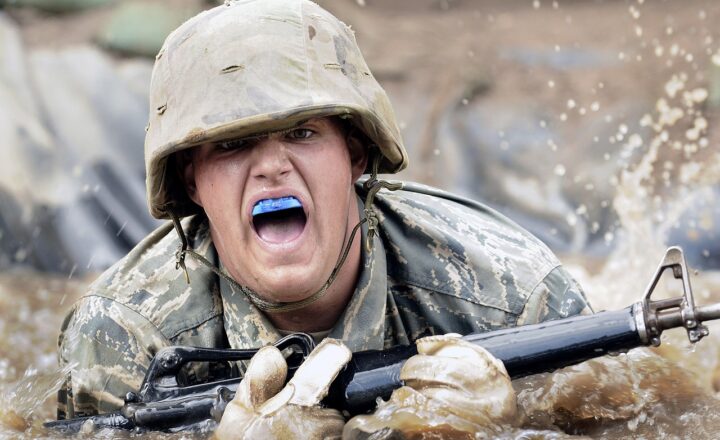How War Simulations Help Strategists Predict Real-Life Battle Outcomes
November 16, 2024

In the realm of military strategy, the accurate prediction of battle outcomes is crucial for success. Over the decades, advancements in technology have transformed how strategists assess potential scenarios and develop plans. One of the most significant developments in this field is the use of war simulations. These simulations are computer-based models that replicate real-life military operations, allowing analysts to explore various strategies and outcomes in a controlled environment. This article delves into the intricacies of war simulations, discussing how they are utilized by modern military strategists to predict the outcomes of real-life battles.
1. What are War Simulations?
War simulations encompass a range of activities designed to replicate the planning and execution of military operations. They can be broadly divided into two categories: analytical simulations and gaming simulations.
– **Analytical Simulations:** These focus on data-driven models that use mathematical computations to predict outcomes based on various scenarios. This type often uses thousands of variables to create a highly detailed and realistic representation of combat.
– **Gaming Simulations:** These are more interactive and often involve human participants making decisions in a mock battle environment. They can vary from tabletop exercises to fully immersive virtual simulations that engage multiple players.
Both types provide invaluable insights into how military forces may react under different circumstances and help in fine-tuning operational strategies.
2. Historical Context and Evolution of War Simulations
The concept of using simulations in military planning is not new. Historically, war games have been an essential part of military training and preparation. In the early 20th century, militaries around the world began to develop more sophisticated methods of simulating warfare, combining maps and physical models to assess battle strategies.
The real transformation, however, came with the advent of computers in the late 20th century. Digital simulations allowed for a level of complexity and interactivity previously unattainable, giving strategists the ability to model intricate battlefield scenarios with countless variables.
Today, nations invest heavily in advanced simulation tools that can predict the outcomes of battles with remarkable accuracy. These simulations support everything from military exercises to serious operational decisions.
3. How War Simulations Work
War simulations incorporate various elements to create reliable predictions about battle outcomes. They typically include:
– **Modeling and Simulation Tools:** These are software applications that replicate battlefield conditions. They often utilize algorithms and statistical models to simulate the impact of different actions and strategies.
– **Data Input:** Accurate and comprehensive data is vital for these simulations. Information about troop movements, weapon systems, terrain, weather conditions, and enemy capabilities must be meticulously gathered and inputted into the system. This ensures that the simulations reflect realistic scenarios with varying degrees of success or failure.
– **Scenario Planning:** Strategists can outline numerous scenarios to test different hypotheses. By altering parameters, analysts can evaluate how various strategies would hold up against different enemy tactics, terrain features, and logistical situations.
The outcomes generated from these simulations offer insights into potential strengths and weaknesses of military plans, allowing for adjustments before actual implementation.
4. Real-World Applications of War Simulations
War simulations are employed in multiple spheres of military operations:
– **Training:** Military personnel regularly engage in simulation exercises to hone their tactical skills without the risks associated with actual combat. These exercises help soldiers practice decision-making in high-pressure situations.
– **Operational Planning:** Before deployment, strategists can assess various plans through simulations, identifying potential pitfalls and refining tactics to improve efficiency and effectiveness.
– **Wargaming for Policy Decisions:** Governments use war simulations to explore the potential repercussions of military actions on a geopolitical scale, aiding in strategic decision-making.
– **Crisis Management:** When faced with unexpected conflicts, military leaders can rely on simulations to model responses and estimate the results of their actions in real-time.
The ability to recreate complex battle scenarios quickly equips military commanders with critical information that can influence mission success.
5. The Future of War Simulations
The field of war simulations continues to evolve dramatically with technological advancements. Emerging technologies such as artificial intelligence (AI) and virtual reality (VR) are set to revolutionize how simulations are conducted:
– **AI Integration:** AI can enhance simulations by analyzing vast amounts of data and suggesting optimal strategies. As AI becomes more sophisticated, it may assist in creating smarter, more realistic simulations that can adapt in real-time to changing battlefield conditions.
– **Virtual Reality Environments:** VR offers immersive experiences that can replicate the stresses and environments of real combat, providing soldiers with unparalleled training opportunities and better preparing them for actual battle conditions.
– **Collaboration with Allies:** With advanced simulations, military forces can collaborate with allied nations, engaging in joint exercises that enhance interoperability and strategic cohesion.
The future of war simulations paints a promising picture, making them an indispensable tool for military strategists aiming to navigate complex and unpredictable battlefields.
Conclusion
War simulations are at the forefront of modern military strategy, shaping how battles are planned and executed. By allowing for the exploration of numerous scenarios and the testing of strategies against realistic simulations, military forces can optimize their approaches, minimize risks, and ultimately save lives. As technology continues to advance, the effectiveness of these simulations will only improve, enhancing the predictive capabilities of military strategists worldwide.
As nations face increasingly complex and dynamic security environments, war simulations will remain a critical component of decision-making and operational planning in the military realm.








